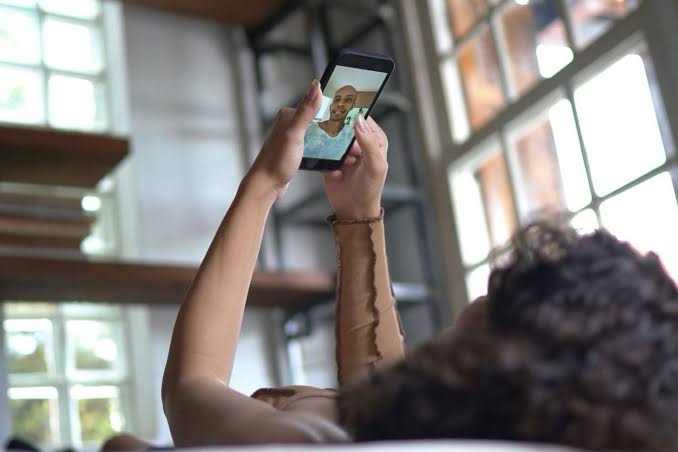
Long-distance relationships (LDRs) are often seen as challenging, with the physical distance between partners creating feelings of loneliness, uncertainty, and sometimes even doubt. However, with the right mindset, effort, and communication, long-distance relationships can not only survive but thrive. Many couples find that their bond strengthens as they navigate the complexities of being apart, learning new ways to connect, and building a deeper emotional foundation. Here’s how to make your long-distance relationship work and keep it thriving despite the miles between you.
1. Establish Clear Communication
Communication is the backbone of any relationship, but it becomes especially crucial in a long-distance one. Since you can’t rely on physical presence to convey emotions or resolve issues, clear and consistent communication is essential.
• Set Expectations: Discuss how often you both want to communicate. Some couples thrive with daily texting and video calls, while others might prefer a few longer calls per week. The key is to establish what feels right for both of you and set realistic expectations.
• Mix It Up: Use a variety of communication methods to keep things interesting. While texting and calling are common, video chats, voice notes, and even handwritten letters can provide a more personal touch. Don’t be afraid to get creative—sending surprise gifts or photos of your day-to-day life can also make the relationship feel more tangible.
• Be Honest: In a long-distance relationship, misunderstandings can easily occur. Be open about your feelings, whether it’s about missing each other or something that’s bothering you. Honesty and vulnerability are key to maintaining trust and emotional intimacy.
2. Build Trust and Be Reliable
Trust is the cornerstone of any relationship, but it’s especially vital when distance is involved. Being apart means you’re not physically present to reassure each other, so it’s important to create an environment of trust and reliability.
• Keep Your Promises: If you say you’ll call at a certain time or do something for your partner, follow through. Consistency in your actions builds trust and reinforces the idea that, even from a distance, you’re dependable.
• Be Transparent: Don’t hide things from each other, even if they might seem small. Transparency about your day, your feelings, or even your interactions with others shows your commitment to openness and honesty.
• Avoid Jealousy: Trust also means managing insecurities. It’s natural to feel jealous at times, but allowing those feelings to fester can lead to tension and miscommunication. Instead, talk about them openly with your partner and work together to find reassurance.
3. Set Long-Term Goals and Make Plans for the Future
A long-distance relationship can feel challenging when it lacks a clear direction. It’s important for both partners to know that there’s an end goal—something to look forward to that justifies the sacrifice of being apart.
• Discuss the Future: Talk about where you see the relationship going. Are you planning to eventually live in the same city? What are your career and life goals, and how do they align with each other? Knowing that your paths are aligned will give both of you something to work toward.
• Plan Visits: If possible, plan regular visits. Having a trip to look forward to can help break up the monotony and give both of you something concrete to anticipate. Make the most of your time together by creating lasting memories and prioritizing quality time.
• Celebrate Milestones: Celebrate anniversaries, achievements, and even small moments like a successful phone call or reaching a relationship goal. Acknowledging these milestones keeps the relationship positive and reinforces the idea that you’re both committed to the long-term.
4. Stay Emotionally Connected
Physical touch is often considered one of the most important aspects of a romantic relationship, but emotional connection can be just as vital, if not more so, in a long-distance relationship. Without physical proximity, staying emotionally close requires extra effort, but it is entirely possible.
• Share Your Day: Even the smallest details of your day-to-day life can keep you feeling connected. Tell each other about things that happened at work or share funny moments from your day. It’s not just about the big conversations, but about staying involved in each other’s lives.
• Support Each Other’s Independence: In a long-distance relationship, it’s important to maintain a sense of individuality. Encourage each other to pursue personal hobbies, friendships, and interests. Being independent can make the time you spend together even more meaningful because you both bring more to the relationship.
• Be Emotionally Available: Listen when your partner shares their thoughts, struggles, or successes. Even if you can’t physically be there for them, emotionally supporting one another can strengthen your bond and keep the connection alive.
5. Manage Conflict Constructively
Conflict is inevitable in any relationship, but it can be more challenging to navigate when you’re apart. The lack of face-to-face interaction can lead to misunderstandings, and with emotions running high, it’s easy for issues to escalate.
• Stay Calm and Communicate Clearly: In moments of conflict, it’s important to take a step back and avoid impulsive reactions. Since tone can be hard to read over text, take the time to communicate thoughtfully and clearly. If a disagreement arises, try to discuss it over a call or video chat where emotions can be better understood.
• Respect Each Other’s Needs: In some cases, one partner might need space to process their feelings, while the other might want immediate resolution. Recognize these differences and respect each other’s needs. You don’t always need to resolve an issue right away, but it’s important to acknowledge it and address it when both of you are ready.
• Don’t Let Disagreements Fester: Unresolved issues can build up and cause resentment over time. If something is bothering you, address it with care and compassion as soon as possible. Clear communication is key to preventing small problems from growing into larger ones.
6. Create a Sense of Shared Experience
One of the challenges of long-distance relationships is the lack of shared day-to-day experiences. However, finding ways to create shared memories—even from a distance—can bring you closer.
• Watch Movies or Shows Together: Choose a show or movie to watch “together” virtually. Use apps or platforms that allow you to sync your streaming, so you can discuss the plot, characters, and share reactions in real time.
• Play Games or Share Hobbies: Whether it’s an online game, a virtual cooking session, or sharing photos of your latest projects, engaging in activities that interest both of you can create a sense of togetherness.
• Celebrate Special Occasions: Even if you’re apart, you can still celebrate birthdays, anniversaries, or holidays. Plan virtual dates, surprise each other with gifts, or even celebrate with a video call to make the occasion feel special.
7. Be Patient and Trust the Process
Long-distance relationships are not always easy, and they require a level of patience that can test even the strongest bonds. Understand that challenges will arise, but overcoming them together can make your relationship even more resilient.
• Be Patient with Your Own Feelings: It’s normal to feel frustrated or lonely at times. Acknowledge these emotions without letting them define your relationship. Focus on the positives—what you’re learning, how you’re growing, and the moments of joy you’re still able to share.
• Trust the Relationship: At the core of a successful long-distance relationship is trust. Trust in each other’s commitment, trust in your ability to navigate challenges, and trust that the distance won’t define your connection.
Conclusion
Making a long-distance relationship work takes effort, communication, and a strong foundation of trust. While the challenges can be significant, the rewards of building a deep emotional bond, learning how to communicate effectively, and planning for a shared future can make it all worthwhile. With patience, creativity, and a clear vision for the future, you can not only survive a long-distance relationship—but come out stronger and more connected than ever.
Tags:
Subscribe To Get Update Latest Blog Post
No Credit Card Required



